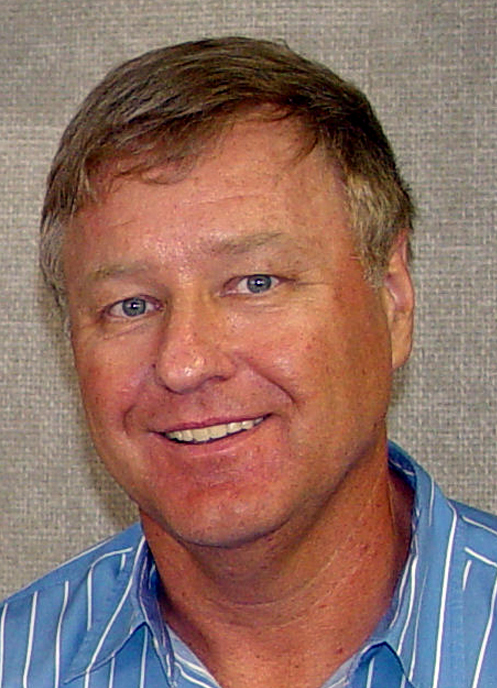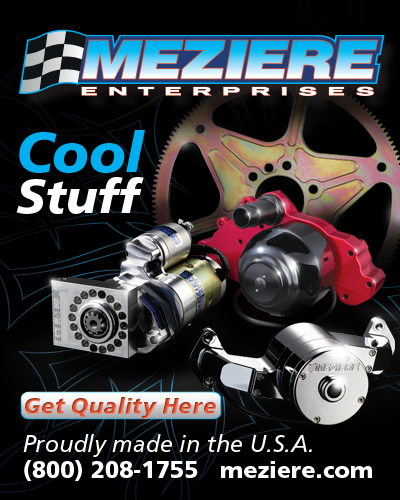MICHAEL KNIGHT: PUTTING EINSTEIN TO THE TEST

Albert Einstein is widely credited with observing that the definition of insanity is doing the same thing over and over again and expecting a different result.
NHRA and ESPN might be about to put Einstein’s theory to the test.
That is, if they continue in 2014 with a TV model that is as broken as an exploded nitro engine. It’s leaking oil. Big time.

Albert Einstein is widely credited with observing that the definition of insanity is doing the same thing over and over again and expecting a different result.
NHRA and ESPN might be about to put Einstein’s theory to the test.
That is, if they continue in 2014 with a TV model that is as broken as an exploded nitro engine. It’s leaking oil. Big time.
Sure, the down TV audience numbers tell the story. But, even more than that, so does common sense. While NHRA keeps spinning its wheels on the use of social media with what comes across as a “the world is a quarter-mile long and two lanes wide” mentality -- giving the impression it thinks results can be kept a surprise until ESPN2 coverage begins (at God-only-knows what hour) -- the rest of the planet has gone full throttle on Twitter and Facebook. News and information are now instantaneous. That horse is out of the barn and not even The Lords of Glendora can change that FACT.
Delayed racecasts are a dinosaur, the equivalent of goggles and open-face helmets. Especially as now presented, in drawn-out three-hour shows, an obsolete format rejected by a short-attention span generation. I’m still shaking my head at the U.S. Nationals, where viewers had to wait more than an HOUR to see the first pair of Top Fuelers. That made me mad as hell! Show us the racing! There’s plenty of time between runs for features, interviews, stats and Jamie Howe’s drivel.
Here are some fixes from my toolbox. They are not cure-alls, but would provide a running start:
1. Go “live” whenever possible.
2. Where there’s no alternative to delayed, present each show in 90 minutes, or two hours when the bikes compete. The Powers-That-Be MUST adapt to the new reality that most people don’t have three hours -- or the attention span -- to watch an event where the outcome is universally available hours earlier. We don’t need three or four replays of routine passes. Save those for when NECESSARY to tell the story.
3. Show racing IMMEDIATELY. Be flexible in the order pairs run, making sure that at least one headline-name driver is in that first race, and the best matchup at the end of each round. Be open-minded: If Courtney Force emerges as a mainstream celebrity/superstar, give her the stage by running Funny Car before Top Fuel. In today’s world, you’ve got to capture people’s interest right away, and actual racing with Big Names is the best way to do it.
4. This means a complete change in production philosophy and that could mean a change in personnel. With all due respect to producer Eric Swaringen and his boss, Shawn Murphy, this year’s decision to lock the pit reporters in a trailer during qualifying was outright ridiculous. Gary Gerould and John Kernan need to be out there REPORTING. (What a concept!) Meanwhile, the continued use of Howe, reflects poorly on the decision-makers. It takes no talent to ask such simplistic by-rote questions as “What does this mean to you?” and “What does this say about your team?” The viewers deserve better.
5. Paul Page has contributed some good and useful essays this season. That element should be part of every race. Bob Frey and Dave McClelland -- God forbid, even some independent journalists -- would be wonderful rotating with Page as essay voices.
6. Create a strong social media capability for fans to interact with announcers and racers, in “real time”, as NASCAR TV has done.
The second suggestion is the only one that I know would encounter serious resistance. And that’s because of the importance sponsors place on data from Joyce Julius & Associates, the most powerful entity you’ve probably never heard of influencing NHRA management.
I first met Joyce in the early 1980s when she was marketing vice president for Domino’s Pizza, overseeing their Indy Car team sponsorship, and I was CART’s communications director. In 1985 she had the idea for her own business and founded it with husband Bob Cotman. Both are now deceased.
JJ&A, based in Ann Arbor, Mich., measures what is described as “clear, in-focus” ID sponsors receive on every cablecast and then assign a dollar value to it based on what a company would pay for a regular commercial TV spot during the race. Example: If Valvoline gets one minute of ID exposure during a National event, and the price of a 30-second commercial is $2,000, JJ&A lists the sponsorship value as $4,000. Extra credit is added for verbal mentions.
Many sports marketers consider this an apples-and-oranges comparison. No matter. Julius, to her credit, created what has come to be accepted throughout the motorsports industry as a key measuring stick in assessing the benefits of corporate involvement. I’ve been around a lot of sponsor managers who swear by these numbers -- and sometimes have the uncomfortable task of explaining to their bosses why a marketplace competitor is ranked higher on the JJ&A list.
There are, of course, other important components to a successful sponsorship. But to many people, the Julius numbers matter the most. I can just hear sponsors complaining to Tom Compton about reduced JJ&A totals if qualifying and race shows were shortened. No doubt, the NHRA president understands that’s what he’d hear.
That’s short-sighted. A faster-paced presentation better fits the lifestyle of today’s audience. At least in theory, it would make the shows more popular. More eyeballs focusing more intently on the flat screen . . . isn’t that what sponsors want? I’d help appease the briefcase carriers by adding the primary car sponsor’s ID in on-screen graphics with the driver’s name.
I respectfully urge Compton and other front-office suits to carefully ponder the following from Arizona’s top sports columnist, the Republic’s Dan Bickley. He wrote this in mid-September, not about NHRA, but in a broader context:
“The prevailing industry belief -- sports can’t wait -- is changing the game for everyone. These days, spoiler alerts are not feasible. It’s nearly impossible to avoid the outcome of taped sporting events. Efforts to do so can be exhausting and untenable, such as turning off your smart phone. As our social-media trees sprout more limbs, it takes great sacrifice to shut off the outside world.
“To the contrary, watching live sports has never been more appealing. It’s always been the best form of reality television, mainly because it features actual talent. And, now, many fans watch with a second screen device, simultaneously voicing thoughts and opinions on Twitter and Facebook.
“Fans have become color commentators in their own broadcasts. You can’t do that if you’re watching a taped game that finished hours earlier. Thereby, it’s a safe bet that commercials will be seen or heard during a live sporting event, and not completely ignored.”
Bottom line: It’s up to the sanction’s executives to LEAD, not REACT.
That’s what it will take to overhaul NHRA’s tin cans-and-string TV model. Otherwise, all involved will be on a truly perilous course, seemingly willing to try to prove Einstein wrong.
Follow Michael Knight on Twitter: @SpinDoctor500





































